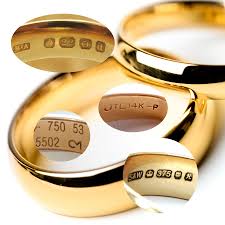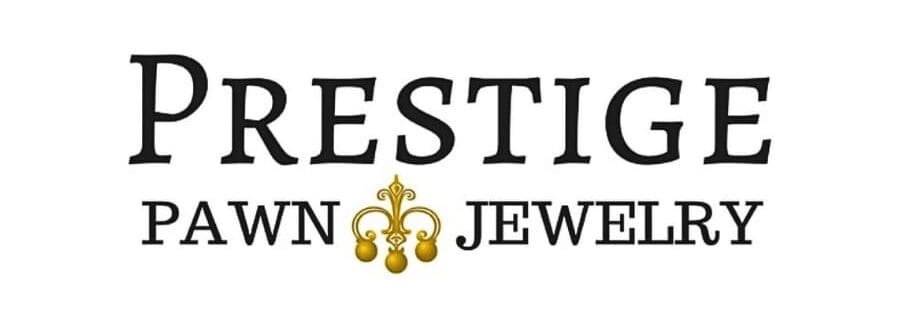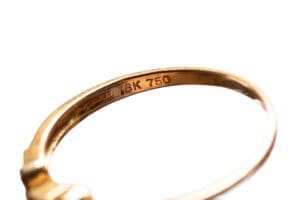Let me tell you about when I was a child and the time I found myself staring at a tiny stamp on an old gold ring, clueless. That’s when my journey into Understanding Gold Hallmarks began.
I soon discovered that these little marks are like historical breadcrumbs, leading back to origins and tales of craftsmanship and authenticity. If you’re curious about what those stamps on your gold jewelry mean, and you would like help understand gold hallmarks then you’re in luck.
Digging deeper will reveal more than just metal content; it opens up stories of medieval guilds, stringent regulations for quality control, and international conventions aimed at standardizing precious metal purity.
This exploration won’t just satisfy curiosity; it’ll arm you with knowledge to make informed choices next time a shiny piece catches your eye.
Table Of Contents:
- The Origins and Significance for Understanding Gold Hallmarks
- Decoding the Language of Gold Hallmarks
- Hallmarking Standards Across the Globe
- Understanding US Gold Markings Compared to UK Standards
- Recognizing Authenticity Through Maker’s Marks and Sponsor’s Marks
- Conclusion
The Origins and Significance for Understanding Gold Hallmarks

Gold hallmarks are like time capsules, etched onto precious metals, telling a story that dates back to the 1200s in Europe. They’re not just fancy symbols; they stand as guardians against fraud, protecting buyers since the days when King Edward I set down rules for gold purity. It’s an art form steeped in history and one that carries on today.
Tracing Back to Medieval Europe
Gold hallmarks are history-rich stamps that protect buyers by signaling the purity of gold. They serve as your assurance that what shines is genuine gold, whether it’s an 18-karat piece or sterling silver.
Decoding the Language of Gold Hallmarks
If you’ve ever held a piece of gold jewelry up to the light, squinting at tiny stamps and symbols, you’re peeking into a secret language. These marks aren’t just for show—they tell a tale of authenticity, history, and value. Think Sherlock Holmes with his magnifying glass—but instead of solving crimes, we’re deciphering gold hallmarks.
The Leopard’s Head and Other Historic Marks
The oldest hallmark known is the Leopard’s Head, originating from London’s assay office.
Marks such as the purity mark, which could be seen as numbers like ‘375’ representing 9 karat gold in UK standards—are equivalent to solid clues about how much pure metal lies within your shiny object at hand.
Hallmarking Standards Across the Globe
In the United States, brands or logos can be registered as trademarks with the US Trademark & Patent Office for a fee. These registered trademarks signify the maker, manufacturer, or sponsor (like Tiffany & Co.) on items of any material. They enable consumer recognition and trust in the consistent quality of the maker’s products. Internationally, a maker’s mark, also known as a responsibility mark, guarantees the item’s quality.
Gold and Silver Marking Act of 1906
The United States National Gold and Silver Marking Act of 1906 was created but originally never required a gold fineness (quality) mark or trademark/hallmark. However, if a fineness mark did exist, it had to be accurate within one half to one karat. Now stricter requirements apply, gold imported, exported or transported requires that the fineness mark must be within -0.003 purity tolerance. A makers mark (designer or manufacturer) is not required but if it is present, that maker is responsible for the quality stated.
Makers’ marks serve as fingerprints in the world of precious metals, tracing each piece back to its creator. The thrill lies in uncovering who crafted your item; it could be anyone from an unknown craftsman to a high-end designer. When you see these unique symbols stamped into metal, they shout out loud about heritage and quality craftsmanship.
A World United by Marks
If there’s one thing better than finding solid gold under your sofa cushions (wishful thinking.), it’s seeing that tiny stamp signaling ‘I’m legit.’ Thanks to global cooperation spurred by initiatives like those set forth by the Vienna Convention, deciphering these authenticity whispers doesn’t need Rosetta Stone anymore.
In corners far and wide—from bustling Mumbai markets brimming with gold karats to serene Swiss valleys echoing with clinks of fine watches—we see uniformity thanks to agreed-upon hallmarks marking both artistry and integrity. There’s something comforting knowing your dazzling adornment speaks an international language—one guarded fiercely through control marks stamped proudly alongside symbols like lions passant and leopards’ heads.
Understanding US Gold Markings Compared to UK Standards
In America’s free market atmosphere, you’ll find gold pieces with many different stamps. These range from purity marks like ’14K’ indicating 14 karat gold to unique maker’s marks such as an artisan signature. But there’s no ironclad rulebook; these markings are not mandated by law but rather serve as branding or indications of metal content.
Contrast that with English rigor where every piece must undergo scrutiny at one of four assay offices before it can even think about gracing shop windows or fingers. Picture each item queued up like students awaiting examination day—because they’re getting tested on precious metal content and then stamped accordingly if they meet standards set forth way back when hallmarking began during medieval times.
And speaking of tests—the assay office mark tells you which historic institution gave your UK gold jewellery its academic endorsement: a leopard’s head for London or a three-towered castle signaling Edinburgh.
The Voluntary Trademark System of USA vs Mandatory UK Hallmarks
A quick trip through time reveals that while Americans embrace freedom in marking their wares only in recent decades has there been a shift towards consumer protection measures similar to longstanding British practices.
In short? Understanding hallmarks is key when navigating gold jewelry, whether you’re buying, selling, or inheriting. So grab your magnifying glass and dive in—it’s essential to know what those little stamps mean.
Important Takeaway: Gold jewelry’s marks reveal its story, with US jewelers embracing a voluntary system that allows for creativity. UK law requires every piece to pass strict tests at historical assay offices. Whether voluntary or compulsory, these hallmarks are crucial for verifying gold purity and authenticity.
Recognizing Authenticity Through Maker’s Marks and Sponsor’s Marks
Think of maker’s marks as an artisan’s signature or a company’s seal of approval.
The Artisan Signature – Maker’s Marks
In the United States, brands or logos can be registered as trademarks with the US Trademark & Patent Office for a fee. These registered trademarks signify the maker, manufacturer, or sponsor (like Tiffany & Co.) on items of any material. They enable consumer recognition and trust in the consistent quality of the maker’s products. Internationally, a maker’s mark, also known as a responsibility mark, guarantees the item’s quality.
Makers’ marks serve as fingerprints in the world of precious metals, tracing each piece back to its creator. The thrill lies in uncovering who crafted your item; it could be anyone from an unknown craftsman to a high-end designer. When you see these unique symbols stamped into metal, they shout out loud about heritage and quality craftsmanship.
Sponsor’s Mark Identification
Then there’s sponsor’s mark identification—like giving credit where credit is due but for sponsorship instead of creation. Say someone helped get that shiny piece into production without actually crafting it themselves; their tag goes alongside the maker’s symbol so everyone knows they played part in bringing some sparkle to life.
Why does all this matter? Because when we buy something labeled ‘solid gold’, we want the real deal—not base metal dressed up. If considering investing serious cash in estate jewelry or planning to sell a family heirloom in the online public sale arena—it pays to know exactly what kind of treasure you’re holding onto.
Conclusion
Understanding gold hallmarks is empowering. It’s peering into history, decoding craftsmanship, and grasping quality in gold jewelry.
You’ve learned the significance of those tiny stamps – from medieval origins to today’s consumer protection. You can now spot a leopard’s head or recognize the weighty meaning behind a maker’s mark.
Global standards vary; remember this when you compare US voluntary marks with UK compulsory ones. And let’s not forget the Vienna Convention.
So next time you hold a piece of gold jewelry, look closely. Every hallmark tells a story of purity and provenance – that knowledge is pure gold in itself.
Don’t wait any longer – take the next step and visit Prestige Pawn & Jewelry today! Our experts are here to assist you with your pawn, buying, and selling needs. Experience the prestige and exceptional service that sets us apart. Contact us now or visit our store to begin your journey into the world of luxury and value.

